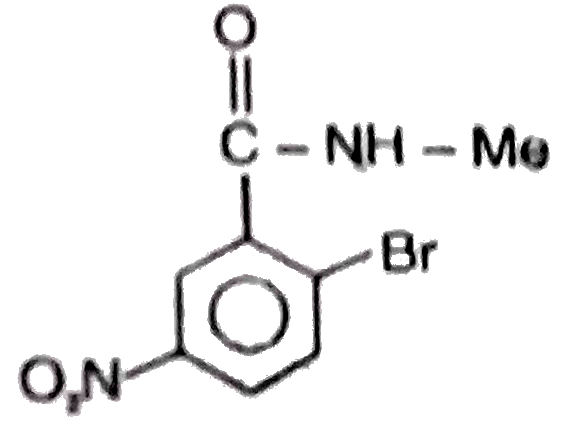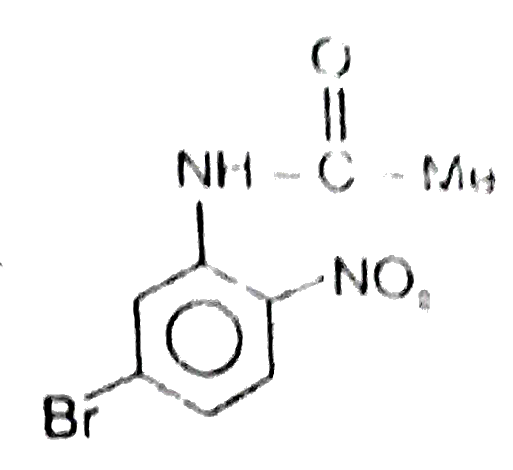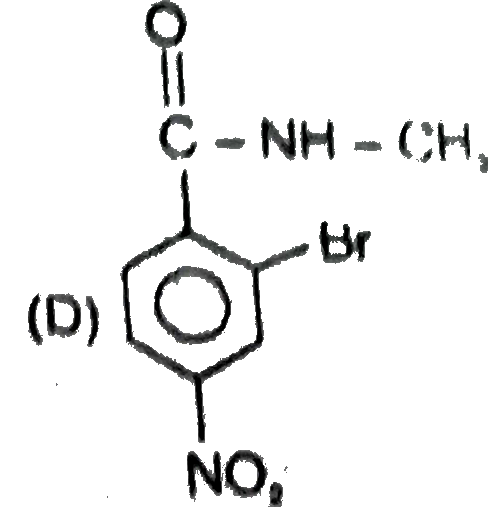Carbonyl compounds reacts with NH2OH to form Aldoximes and Ketoximes. Configuration of these can be determined by Beckmann rearrangement as that group migrates which is anti w.r.t -OH

It is important to note that the migration of group is completely Retentive and no loss of optical activity is seen.

Following is true about product
It is also (+) laevorotatory
Both (+)(−) forms are obtained in equal amount
It is having 'S' configuration for chiral carbon
It is having R configuration for chiral carbon
The correct Answer is:D
Shift is retentive therefore initial configuration will be maintained. Initially it is "S" and afterwards it will be "R" due to change in Priority of atoms.

Topper's Solved these Questions
- ALDEHYDES AND KETONES BOOK - ERRORLESS CHAPTER - ALDEHYDES AND KETONES EXERCISE - JEE Section Integer type questions
4 Videos
- ALDEHYDES AND KETONES BOOK - ERRORLESS CHAPTER - ALDEHYDES AND KETONES EXERCISE - JEE Section Matrix Match type questions
1 Videos
- ALDEHYDES AND KETONES BOOK - ERRORLESS CHAPTER - ALDEHYDES AND KETONES EXERCISE - JEE Section Reasoning type questions
4 Videos
- ALCOHOL, PHENOL AND ETHERBOOK - ERRORLESS CHAPTER - ALCOHOL, PHENOL AND ETHEREXERCISE - JEE SECTION (JEE Advanced 2018) More than one choice correct answer
1 Videos
- ANALYTICAL CHEMISTRYBOOK - ERRORLESS CHAPTER - ANALYTICAL CHEMISTRYEXERCISE - JEE Section (Only One Choice Answer)
36 Videos
Similar Questions
Aldehydes and Ketones react with NH2OH to form aldoximes and Ketoximes respectively. Configuration of these can be determined by Beckmann rearragement as that group migrates which is anti w.r.t -OH

Which step is Rate determening step ?
View SolutionAlldehydes and Ketones react with NH2OH to form aldoximes and Ketoximes respectively. Configuration of these can be determined by Beckmann rearragement as that group migrates which is anti w.r.t -OH

[X]H2SO4−−−→H2O−−→Ph−NH2+CH3−C∣∣O−OH
Identify the configuration of [X] compound
View Solution
Knowledge Check
Aldehydes and Ketones reacts with NH2OH to form Aldoximes and Ketoximes respectively.Configuration of these can be determined by Beckmann rearrangement as that group migrates which is anti w.r.t-OH

It is interesting to note that the migration of group is completely retentive and no loss of optical activity is seen.
 Following is true about product AIt is also (+) laevorotatoryBBoth (+) and (-) forms are obtained in equal amountCIt is having 'S' configuration for chiral carbonDit is having R configuration for chiral carbon
Following is true about product AIt is also (+) laevorotatoryBBoth (+) and (-) forms are obtained in equal amountCIt is having 'S' configuration for chiral carbonDit is having R configuration for chiral carbonAldehydes and Ketones reacts with NH2OH to form Aldoximes and Ketoximes respectively.Configuration of these can be determined by Beckmann rearrangement as that group migrates which is anti w.r.t-OH

It is interesting to note that the migration of group is completely retentive and no loss of optical activity is seen.
 A
A B
B C
C D
D
Aldehydes and Ketones reacts with NH2OH to form Aldoximes and Ketoximes respectively.Configuration of these can be determined by Beckmann rearrangement as that group migrates which is anti w.r.t-OH

It is interesting to note that the migration of group is completely retentive and no loss of optical activity is seen.
CH3CHO+NH2OHΔ−−→PH⊕−−→QBr2/KOH−−−−−−→R(CH3NH2) (as only product) Following is correctAOxime P is syn form of geometrical isomersBOxime P is anti formCQ is more basic than RDQ is H−C∣∣O−NH−CH3
Alldehydes and Ketones react with NH2OH to form aldoximes and Ketoximes respectively. Configuration of these can be determined by Beckmann rearragement as that group migrates which is anti w.r.t -OH


The product (B) is :
View SolutionAlldehydes and Ketones react with NH2OH to form aldoximes and Ketoximes respectively. Configuration of these can be determined by Beckmann rearragement as that group migrates which is anti w.r.t -OH

Which step is Rate determening step ?
View SolutionAlldehydes and Ketones react with NH2OH to form aldoximes and Ketoximes respectively. Configuration of these can be determined by Beckmann rearragement as that group migrates which is anti w.r.t -OH

[X]H2SO4−−−→H2O−−→Ph−NH2+CH3−C∣∣O−OH
Identify the configuration of [X] compound
View SolutionAcid catalysed conversation of 1,2-diol or vicinal, into carbonyl compound known as pinocaol-pinacolone rearrangement.

Generally more electron donating group migrate during mechanism, migration of H is faster because of its smaller size.
Which of the following is not correct about this rearrangement?
View SolutionAcid catalysed conversation of 1,2-diol or vicinal, into carbonyl compound known as pinocaol-pinacolone rearrangement.

Generally more electron donating group migrate during mechanism, migration of H is faster because of its smaller size.
Which of the following is not correct about this rearrangement?
View Solution
